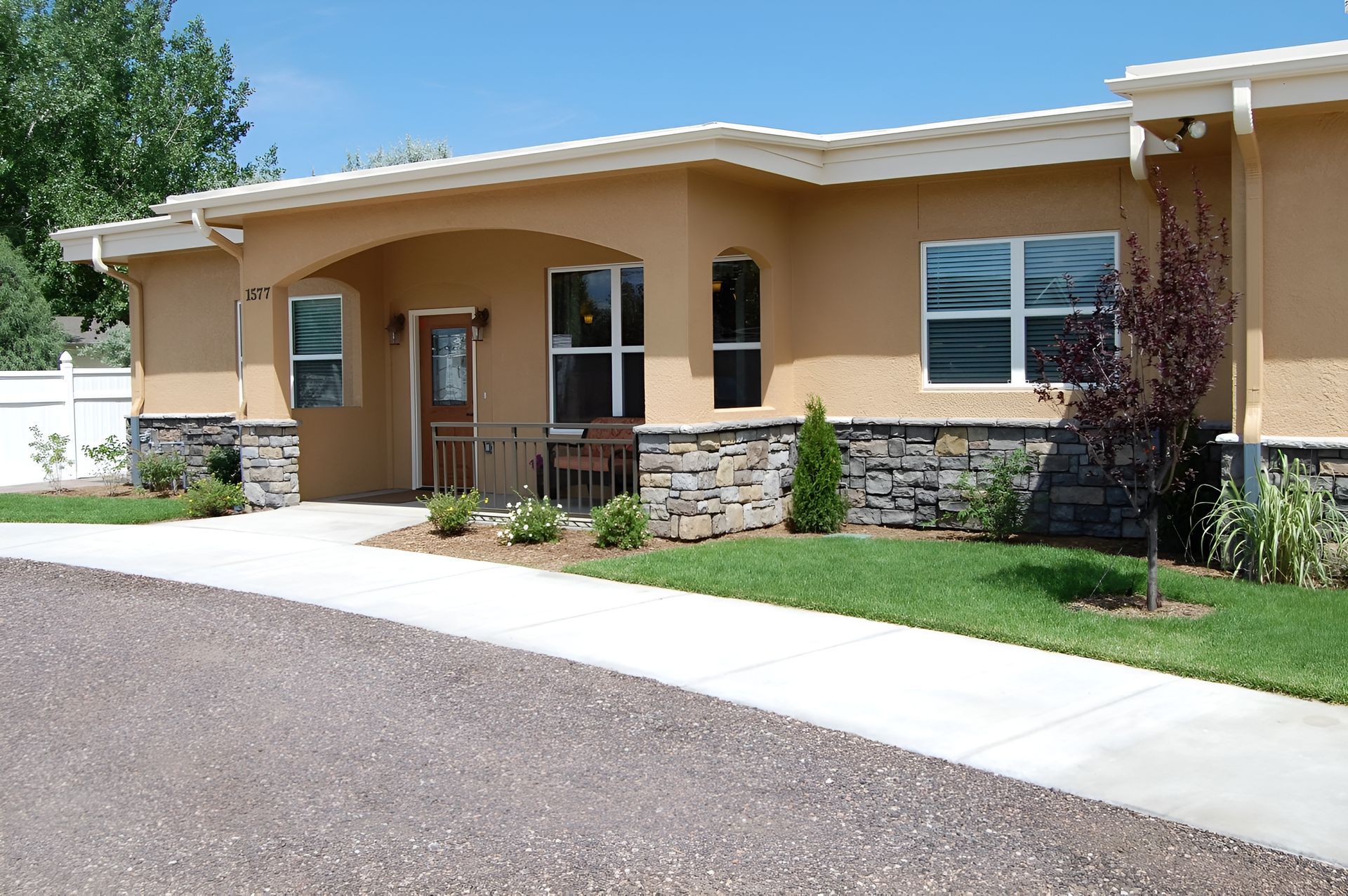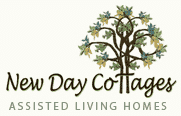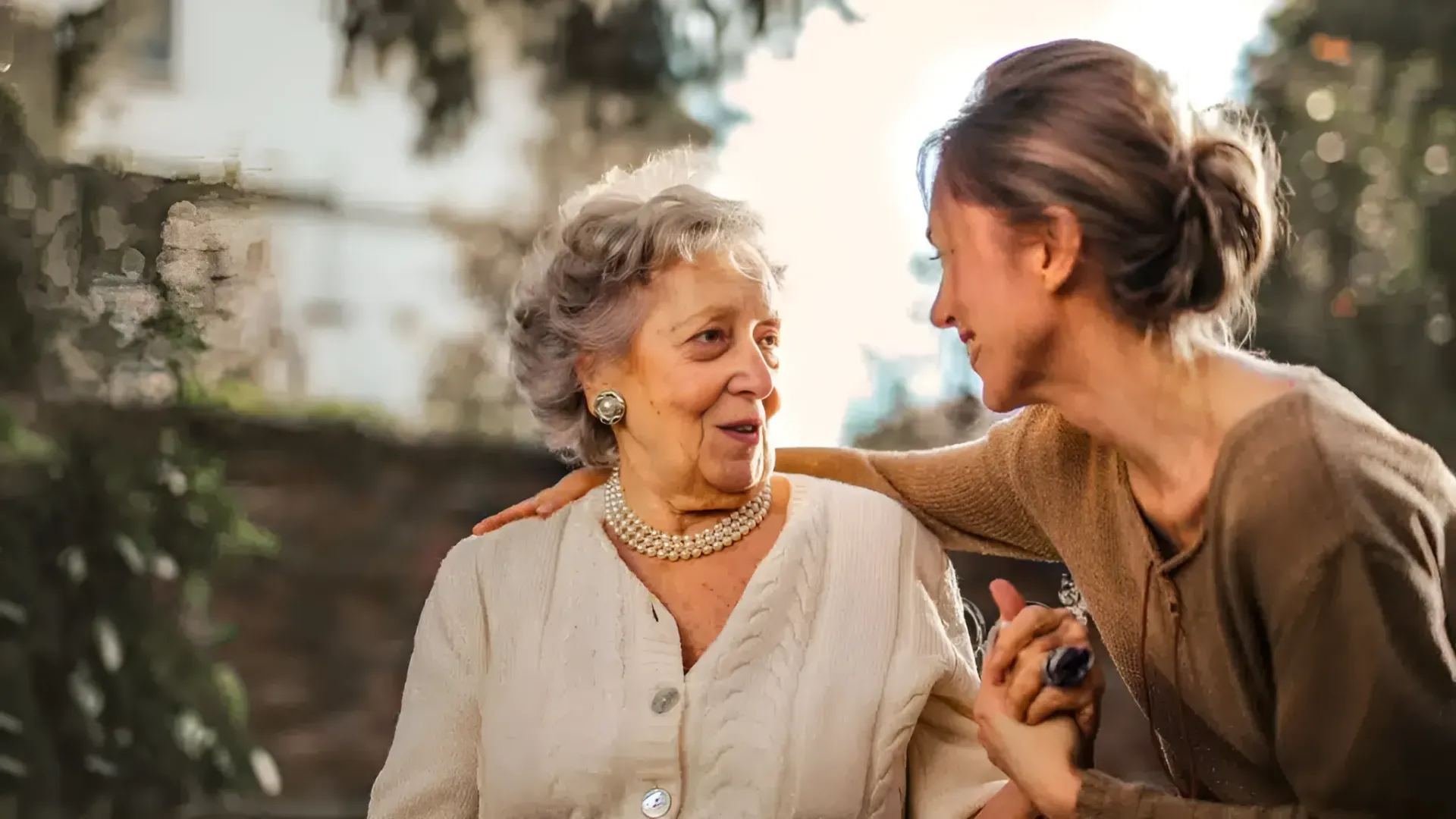What Is Assisted Living? Popular Senior Living Options

What Is Assisted Living?
Assisted living is a type of long-term care that provides personalized support for seniors in a residential setting. It offers various services to help residents with their daily needs while promoting independence. Unlike nursing homes or skilled nursing facilities, assisted living focuses on creating a community-based living environment where seniors can receive assistance while maintaining a sense of autonomy and privacy.
Understanding Assisted Living and Its Purpose
Assisted living data-preserver-spaces=”true”> plays a crucial role in preserving the independence of seniors as they age. Many older adults have a strong desire to stay in their homes, but the reality is that they may need assistance with activities of daily living (ADLs) as they grow older. Assisted living provides a middle ground, allowing seniors to receive the support they need while maintaining their independence and quality of life. It acknowledges the challenges of aging and provides a safe and supportive environment for seniors to thrive.
The Importance of Maintaining Independence
Aging is a natural part of life, and it is essential to prioritize the independence of seniors during this stage. Assisted living facilities understand the significance of freedom and focus on empowering seniors to maintain control over their daily lives. By providing personalized assistance with ADLs, such as dressing, bathing, and medication management, these facilities ensure that seniors can continue to engage in activities that promote their physical and emotional well-being while receiving the necessary support.
The Reality of Aging and Need for Assistance
The aging process often changes physical and cognitive abilities, making it challenging for seniors to carry out tasks they once performed effortlessly. Assisted living acknowledges this reality and assists in helping seniors navigate these changes while preserving their dignity and privacy. Whether it’s help with mobility, meal preparation, or transportation, assisted living facilities offer a comprehensive range of services tailored to the specific needs of each resident.
| KEY POINTS | ASSISTED LIVING AND INDEPENDENCE | ||
|---|---|---|---|
| Supporting Independence | Assisted living allows seniors to receive necessary support while maintaining their independence and quality of life. | The Importance of Independence | Preserving independence is vital for seniors’ physical and emotional well-being as they age. |
| Personalized Assistance | Assisted living facilities provide personalized assistance with activities of daily living (ADLs) to empower seniors and ensure their well-being. | Challenges of Aging | The aging process brings about changes that may require additional support and assistance. |
| Dignity and Privacy | Assisted living facilities prioritize maintaining seniors’ dignity and privacy while assisting with their daily needs. | Navigating Changes | Assisted living helps seniors navigate physical and cognitive changes while preserving their quality of life. |
Services Offered in Assisted Living Facilities
Assisted living facilities provide a wide range of services to cater to the individual needs of their residents. These services are designed to ensure personal care, socialization, and safety, enhancing the overall well-being of seniors.
The services offered in assisted living facilities include:
- Assistance with Activities of Daily Living (ADLs): Assisted living facilities provide support with tasks such as bathing, dressing, grooming, and medication management. These services enable residents to maintain personal hygiene and well-being.
- Housekeeping: Assisted living facilities offer housekeeping services to ensure residents a clean and comfortable living environment.
- Meals: Nutritious meals are provided to residents, accommodating their dietary needs and preferences. Assisted living facilities often have dining rooms where residents can socialize during meal times.
- Transportation: Assisted living facilities provide transportation services, ensuring residents can quickly attend medical appointments, social outings, and community events.
- 24/7 Staff Availability: Assisted living facilities have staff available round-the-clock to provide safety and support to residents. This ensures that assistance is readily accessible in case of emergencies or any other needs that may arise.
| SERVICES | DESCRIPTION |
|---|---|
| Assistance with ADLs | Support with tasks such as bathing, dressing, grooming, and medication management. |
| Housekeeping | Services to ensure a clean and comfortable living environment. |
| Meals | Nutritious meals accommodating dietary needs and preferences. |
| Transportation | Services to facilitate transportation for medical appointments, social outings, and community events. |
| 24/7 Staff Availability | Round-the-clock availability of staff for safety and support. |
The Spectrum of Care: Assisted Living vs. Skilled Nursing
When considering long-term care options for seniors, it is essential to understand the differences between assisted living and skilled nursing facilities. While both provide care and support, they serve distinct purposes based on the level of medical care required.
Differences Between Assisted Living and Skilled Nursing Facilities
Assisted living facilities focus on personalized care and support for activities of daily living (ADLs) while promoting independence. These facilities are ideal for seniors who need assistance with daily tasks but do not require round-the-clock medical attention. Assisted living offers a care spectrum that caters to the individual needs of residents, ensuring they receive help with ADLs such as bathing, dressing, and grooming, as well as medication management, meals, housekeeping, transportation, and 24/7 staff availability for safety and support.
On the other hand, skilled nursing facilities provide full-time medical care by trained staff, making them suitable for individuals who require specialized medical treatment and rehabilitation services. These facilities have medical professionals who can address complex medical conditions, administer medications, and provide intensive nursing care.
Understanding the Level of Medical Care Provided
The key distinction between assisted living and skilled nursing facilities lies in the level of medical care offered. Assisted living facilities prioritize personal care data-preserver-spaces=”true”> and assistance with ADLs, providing a supportive environment that promotes independence and well-being. Skilled nursing facilities, on the other hand, deliver comprehensive medical care to individuals with acute or chronic health conditions, requiring constant monitoring and specialized treatment.
| ASSISTED LIVING FACILITIES | SKILLED NURSING FACILITIES |
|---|---|
| Personalized care and support | Full-time medical care |
| Assistance with ADLs | Specialized medical treatment |
| Community-based living environment | Constant monitoring and nursing care |
One of the core principles of assisted living is the adaptation of care to meet each resident’s unique needs. Upon admission, residents undergo an assessment to identify their specific requirements and preferences. This assessment allows for creating a personalized service plan that ensures individualized care and promotes the overall well-being of residents. Assisted living facilities strive to provide a supportive and nurturing environment that fosters independence and enhances the quality of life for seniors.
Assisted living communities offer a wide range of lifestyle benefits for their residents. These communities are designed to provide a supportive and engaging environment that promotes a sense of belonging and overall well-being.
Socialization is an integral part of the assisted living experience. Assisted living communities understand the importance of fostering social connections and providing residents with various social engagement opportunities and activities.
At an assisted living community, seniors can meet and connect with other residents with similar interests and life experiences. They can participate in group outings, hobby clubs, fitness classes, and organized events, allowing them to stay active, connected, and fulfilled.
Engaging in social activities can have significant mental and emotional benefits for seniors. It helps reduce loneliness, fosters community and promotes happiness and well-being.
Assisted living facilities recognize the importance of personalization and strive to create a living environment that feels like home for each resident. Personalization allows seniors to bring their furniture, decorations, and personal items to create a familiar and comfortable living space.
Residents can maintain a sense of independence and individuality by personalizing their living spaces. It helps create a warm and inviting atmosphere where they can relax and feel at home.
Assisted living communities also offer individualized care plans that cater to each resident’s unique needs. These plans consider preferences, health conditions, and lifestyle choices to ensure residents receive the personalized care and assistance they require.
| LIFESTYLE BENEFITS IN ASSISTED LIVING COMMUNITIES |
|---|
| Opportunities for social engagement |
| Diverse range of activities and events |
| Promotion of mental and emotional well-being |
| Personalization of living spaces |
| Individualized care plans |
Assisted living communities provide residents with a supportive and enriching lifestyle. By offering opportunities for social engagement, various activities, and personalization options, they create an environment where seniors can truly thrive and enjoy their golden years to the fullest.
Assisted living facilities play a vital role in supporting residents with their activities of daily living (ADLs), ensuring they can maintain their independence and carry out these essential tasks with dignity and support. Qualified staff members are trained to assist while promoting resident autonomy and self-care.
Assistance with ADLs in assisted living can cover various areas, including:
- Bathing: Assisting residents with bathing and maintaining personal hygiene.
- Dressing: Aiding residents in selecting appropriate clothing and getting dressed.
- Grooming: Supporting residents with hair care, shaving, and oral hygiene tasks.
- Eating: Assisting residents who may need help with feeding or dietary restrictions.
- Mobility: Supporting residents in moving around safely, including transferring from bed to wheelchair or walking assistance.
- Toileting: Assisting with using the toilet and maintaining personal cleanliness.
The goal of ADL assistance is to ensure that residents can continue to engage in daily activities to the best of their abilities, fostering their independence and overall well-being. These services are tailored to meet each resident’s unique needs, promoting dignity and self-worth.
| ACTIVITIES OF DAILY LIVING (ADLS) | ASSISTANCE PROVIDED |
|---|---|
| Bathing | Assistance with bathing and maintaining personal hygiene. |
| Dressing | Aiding residents in selecting appropriate clothing and getting dressed. |
| Grooming | Support with tasks like hair care, shaving, and oral hygiene. |
| Eating | Assistance with feeding or dietary restrictions. |
| Mobility | Support with safe movement, including transferring and walking assistance. |
| Toileting | Assistance with using the toilet and maintaining personal cleanliness. |
By providing appropriate assistance with ADLs, assisted living facilities enable residents to live more comfortably, ensuring their physical and emotional well-being. Through personalized care and support, assisted living facilities strive to enhance the quality of life for seniors and promote their overall independence.
The Financial Aspect: Costs and Insurance Coverage
When considering assisted living, it’s essential to understand the financial aspect of this type of care. The cost of assisted living can vary depending on several factors, including the facility’s location, the size of the living unit, and the level of care needed. By breaking down the costs associated with assisted living, individuals and their families can better understand the financial implications.
Breaking Down the Cost of Assisted Living
Assisted living costs typically include accommodation, meals, personal care services, utilities, and various amenities the facility offers. Additional expenses may arise if specialized care or services are required. It’s essential to inquire about any extra fees or charges that may apply, such as medication management, transportation, or specific therapies. By getting a clear breakdown of the costs involved, individuals can plan and budget accordingly for assisted living.
Exploring Insurance Options: Medicare, Medicaid, and Long-Term Care Insurance
Insurance coverage can play a significant role in making assisted living more affordable. Medicare, the federal health insurance program for individuals 65 and older, typically does not cover long-term care services in assisted living facilities. However, there may be coverage for certain medical expenses related to the individual’s health conditions.
On the other hand, Medicaid is a program jointly funded by the state and federal governments that provides financial assistance for low-income individuals and families. The eligibility criteria and coverage for assisted living services vary by state, so it’s essential to check the specific guidelines in the area where the facility is located.
Long-term care insurance is a private insurance option that can provide coverage for assisted living services. The coverage and benefits offered vary depending on the policy purchased. It’s essential to review the terms and conditions of the insurance policy to understand the extent of coverage for assisted living expenses.
By exploring insurance options such as Medicare, Medicaid, and long-term care insurance, individuals can potentially alleviate some of the financial burden associated with assisted living. Proper financial planning and understanding of insurance coverage options can help make this type of care more affordable and accessible for seniors and their families.
| COST FACTORS | EXAMPLES |
|---|---|
| Location | Urban areas tend to be more expensive than rural areas. |
| Living Unit Size | Larger units generally come with higher costs. |
| Level of Care Needed | More extensive assistance and specialized care may increase costs. |
| Add-On Services | Optional services such as transportation or medication management may have additional fees. |
| Amenities | Access to amenities like fitness centers or dining options may impact costs. |
| Insurance Coverage | Medicare, Medicaid, or long-term care insurance can help offset costs. |
Assessing the Right Time for Assisted Living
Recognizing the Signs and Making the Decision
Assessing the right time for assisted living involves recognizing the signs that indicate the need for additional support and making an informed decision. It’s essential to be aware of the following signs:
- Changes in personal care abilities
- Safety concerns
- Increased social isolation
- Inability to manage household tasks
When these signs become evident, it may be time to consider assisted living a viable option. Engaging in open and honest conversations with loved ones and healthcare professionals can help make an informed decision that prioritizes the well-being and safety of the senior.
Transitioning from Home or Independent Living to Assisted Living
Transitioning from home or independent living to assisted living requires careful planning and communication to ensure a smooth and successful adjustment. Here are some strategies to make the transition as seamless as possible:
- Educate yourself about the assisted living facility: Research the facilities in your area, visit them in person, and ask questions to understand the services and amenities they offer thoroughly.
- Involve the senior in decision-making: Respect the senior’s preferences and involve them in decision-making. Their input is valuable and can help ensure control and autonomy during the transition.
- Create a personalized transition plan: Work with the assisted living facility to create a customized plan that addresses the senior’s needs and concerns. This plan can include details about the move, the transfer of medical records, and establishing a support network within the facility.
- Support emotional well-being: Recognize that the transition can be emotionally challenging for the senior. Offer emotional support, encourage engagement in activities and social interactions, and stay connected to maintain a sense of familiarity and security.
These strategies can smooth the transition to assisted living, ensuring comfort, safety, and overall well-being.
Signs Indicating the Right Time to Consider Assisted Living
| SIGNS | EXPLANATION |
|---|---|
| Changes in personal care abilities | Difficulty with activities of daily living (ADLs), such as bathing, dressing, or grooming |
| Safety concerns | Increased risks of falls, accidents, or home hazards |
| Increased social isolation | Lack of social connections and decreased participation in activities |
| Inability to manage household tasks | Struggles with housekeeping, cooking, or maintaining the home environment |
The Various Types of Assisted Living Residences
Assisted living residences come in various types to cater to different needs and preferences. These residences provide a range of options for seniors and their families based on their requirements. The different types of assisted living residences include:
- Apartment-Style Living: These residences offer private living units, typically in the form of apartments or suites. Residents have their own space while benefiting from the support and services provided by the assisted living facility.
- Shared Accommodations: Some assisted living facilities provide shared accommodations, where residents have a private bedroom but share common living areas with other residents. This option offers an opportunity for social interaction and companionship.
- Specialized Memory Care Units: For individuals with dementia or Alzheimer’s disease, specialized memory care units are available within certain assisted living facilities. These units provide a safe and secure environment with specialized care and support for residents with memory impairments.
Each type of assisted living residence offers unique amenities and care services that cater to specific needs. By exploring the various types of assisted living residences, seniors and their families can find the best fit for their requirements and ensure their loved ones receive the specialized care they need.
| TYPE OF ASSISTED LIVING RESIDENCE | DESCRIPTION |
|---|---|
| Apartment-Style Living | Private living units such as apartments or suites where residents have their own space. |
| Shared Accommodations | Residents have a private bedroom but share common living areas with other residents for social interaction. |
| Specialized Memory Care Units | Secure environments with specialized care for residents with dementia or Alzheimer’s disease. |
Comparing State Regulations and Assisted Living Licenses
Assisted living is regulated in all 50 states, but it’s important to note that state regulations and licensing requirements may vary. Understanding the legal framework and compliance standards is crucial to ensuring seniors receive care in facilities meeting industry standards and guidelines.
When evaluating assisted living options in different states, there are several key factors to consider:
Understanding the Legal Framework and Compliance
- Research and familiarize yourself with the specific state regulations governing assisted living. This includes laws, rules, and licensing requirements that facilities must adhere to.
- Consider whether the state has established a dedicated agency regulating assisted living facilities. This agency plays a crucial role in monitoring compliance and enforcing regulations.
- Review the inspection and complaint processes to ensure that facilities are regularly evaluated and held accountable for maintaining a high standard of care and safety.
How To Evaluate Assisted Living Options in Different States
When comparing assisted living facilities in different states, it’s essential to use specific evaluation criteria to make an informed decision:
- Licensing: Verify that the assisted living facilities you are considering have the licenses and certifications to operate legally. This ensures that the facility meets basic regulatory requirements.
- Staff Qualifications: Look into the qualifications and training of the staff members. Check whether caregivers are adequately trained in providing care to seniors and if licensed healthcare professionals are available on-site.
- Safety Protocols: Inquire about the safety protocols and emergency preparedness measures in place. This includes fire safety, security measures, and protocols for addressing medical emergencies.
- Quality of Care: Consider factors such as staff-to-resident ratio, availability of personalized care plans, and the overall reputation and reviews of the facility. It is crucial to choose a facility that prioritizes its residents’ well-being and individual needs.
By conducting thorough research, understanding state regulations, and evaluating assisted living facilities based on specific criteria, you can ensure the selection of a reputable and reliable facility that meets the needs of seniors seeking care.
Exploring Benefits Beyond Basic Care in Assisted Living
Assisted living facilities offer more than just primary care services for their residents. They prioritize the holistic well-being of seniors by providing additional benefits that contribute to their overall quality of life. These benefits go beyond meeting the residents’ physical needs and encompass their mental, emotional, and social wellness. By offering a comprehensive approach to care, assisted living facilities create an environment that promotes a fulfilling and enriching lifestyle for seniors.
One of the key additional benefits available in assisted living facilities is the inclusion of wellness programs. These programs are designed to support residents’ physical health and well-being. They often include fitness activities such as exercise classes, yoga, and walking clubs, which help seniors stay active and improve their strength and mobility. Residents can engage in regular physical activity through these programs, leading to a healthier and more vibrant lifestyle.
In addition to wellness programs, assisted living facilities provide their residents with educational opportunities. These can range from informative seminars and workshops to guest speakers and cultural events. Assisted living facilities offer intellectually stimulating activities to help residents continue their pursuit of knowledge and personal growth. These educational opportunities contribute to the residents’ well-being, keeping their minds sharp and engaged.
Another significant benefit of assisted living is the access to healthcare professionals. Many assisted living facilities have medical staff available on-site to ensure the health and safety of their residents. These professionals can provide regular health assessments, medication management, and coordination of medical services. Access to healthcare professionals in the same facility saves residents from traveling to different locations. Knowing that their healthcare needs are being met gives them peace of mind.
By embracing these additional benefits, assisted living facilities create an environment focusing on their residents’ comprehensive care and well-being. Seniors in these facilities receive assistance with daily activities and enjoy many opportunities to improve their physical, mental, and emotional wellness. This holistic approach contributes to a fulfilling quality of life and ensures that seniors in assisted living facilities continue to lead vibrant and enriching lifestyles.
Evaluating the Transition and Adjustment to Assisted Living
Support Strategies for New Residents
Assisted living facilities understand the importance of ensuring a smooth adjustment for new residents. One key strategy is the implementation of orientation programs, where residents are provided with information about the facility’s services, rules, and daily routines. These programs help new residents become familiar with their new surroundings, fostering a sense of comfort and confidence.
Peer support also plays a significant role in helping new residents navigate their transition to assisted living. Facilities often organize social activities and group discussions, enabling residents to meet and engage with their peers. This not only helps build new friendships but also provides a support system for individuals who are going through similar experiences.
Personalized care plans are also developed to address each resident’s needs and preferences. These plans ensure that individualized care and support are provided, catering to the unique requirements of each new resident. Assisted living facilities help residents feel valued and supported by tailoring services to meet their needs.
Building Relationships with Staff and Residents
Building relationships with staff members and fellow residents is crucial for a positive and fulfilling living experience in assisted living. Staff members are vital in providing care and support and creating a welcoming and respectful environment. Encouraging open communication and establishing a trusting relationship with the staff can significantly contribute to resident satisfaction and well-being.
Assisted living facilities also prioritize relationship-building among residents. By promoting socialization and organizing group activities, they create opportunities for residents to interact, engage, and form connections with one another. These relationships provide companionship and foster a sense of belonging and community. Friendships formed within the assisted living setting can contribute to a happier and more fulfilling life.
Assisted living facilities recognize the importance of transition support, adjustment strategies, and relationship-building to ensure a smooth adjustment and a positive resident living experience. By implementing these strategies, they strive to create an environment that promotes resident well-being, enhances social connections, and fosters a sense of belonging and fulfillment.
| SUPPORT STRATEGIES FOR NEW RESIDENTS | BUILDING RELATIONSHIPS WITH STAFF AND RESIDENTS |
|---|---|
| Orientation programs | Open communication |
| Peer support | Establishing trust |
| Personalized care plans | Promoting socialization |
| Organizing group activities |
Conclusion
Assisted living offers a unique and valuable solution for seniors who require support with their daily activities while maintaining independence and quality of life. With a range of services, personalized care plans, and a community-based environment, assisted living provides a holistic approach to aging well.
By understanding the essentials of assisted living, seniors and their families can make informed decisions and find the suitable facility that meets their needs. Whether it’s assistance with activities of daily living (ADLs), socialization opportunities, or access to additional benefits like wellness programs, assisted living prioritizes the overall well-being of residents.
Assisted living facilities strive to create a nurturing and supportive environment where seniors can thrive and remain independent. Through personalized care plans and the availability of 24/7 staff, assisted living ensures that residents receive the assistance they need while preserving their autonomy and dignity.
In conclusion, assisted living provides practical support for daily activities, fosters a sense of community, and enhances the quality of life for seniors. By embracing the benefits of assisted living, older adults can enjoy a fulfilling and enriching lifestyle while receiving the necessary care and support they deserve.
What Is Assisted Living FAQs
What is assisted living?
Assisted living is a type of long-term care that provides personalized support for seniors in a residential setting. It offers various services to help residents with their daily needs while promoting independence.
Why is maintaining independence important in assisted living?
Maintaining independence is essential in assisted living because it allows seniors to receive the support they need while preserving their autonomy and quality of life.
What services are offered in assisted living facilities?
Assisted living facilities offer a wide range of services, including assistance with activities of daily living (ADLs), medication management, housekeeping, meals, transportation, and 24/7 staff availability for safety and support.
What is the difference between assisted living and skilled nursing facilities?
Assisted living provides more personalized care and support for daily living activities, while skilled nursing facilities offer full-time medical care by trained staff. Assisted living is suitable for seniors who require assistance with ADLs but do not need round-the-clock medical attention.
How is care adapted in assisted living to meet residents' needs?
Upon admission, residents undergo an assessment to identify their specific requirements and preferences. This assessment allows for the creation of personalized service plans that ensure individualized care and promote the overall well-being of residents.
What lifestyle benefits do assisted living communities offer?
Assisted living communities provide opportunities for social engagement, activities, wellness programs, fitness activities, educational opportunities, and access to healthcare professionals.
What assistance is provided in activities of daily living (ADLs) in assisted living?
Assisted living facilities assist with bathing, dressing, grooming, eating, mobility, and toileting to support residents’ daily routines.
How much does assisted living cost, and what insurance options are available?
The cost of assisted living varies, but it can be broken down to understand financial implications. Insurance options such as Medicare, Medicaid, and long-term care insurance can provide funding assistance.
How do you know it's the right time for assisted living?
The right time for assisted living can be determined by recognizing signs that additional support is needed and making an informed decision. Signs may include changes in personal care abilities, safety concerns, increased social isolation, or the inability to manage household tasks.
What types of assisted living residences are available?
Assisted living residences come in various types, including apartment-style living, shared accommodations, and specialized memory care units for individuals with dementia or Alzheimer’s.
How do state regulations and assisted living licenses vary?
Assisted living is regulated in all 50 states, but state regulations and licensing requirements may vary. It’s essential to consider factors such as licensing, staff qualifications, safety protocols, and quality of care when evaluating assisted living options in different states.
What are the benefits beyond primary care in assisted living?
Assisted living facilities offer additional benefits such as wellness programs, fitness activities, educational opportunities, and access to healthcare professionals to promote the overall well-being of residents.
How can the transition and adjustment to assisted living be made more accessible?
Support strategies for new residents, such as orientation programs, peer support, personalized care plans, and building relationships with staff and fellow residents, can help ease the transition process and promote a sense of belonging.
What are the benefits of assisted living for seniors?
Assisted living offers a unique and valuable solution for seniors who require support with their daily activities while maintaining independence and a high quality of life.










